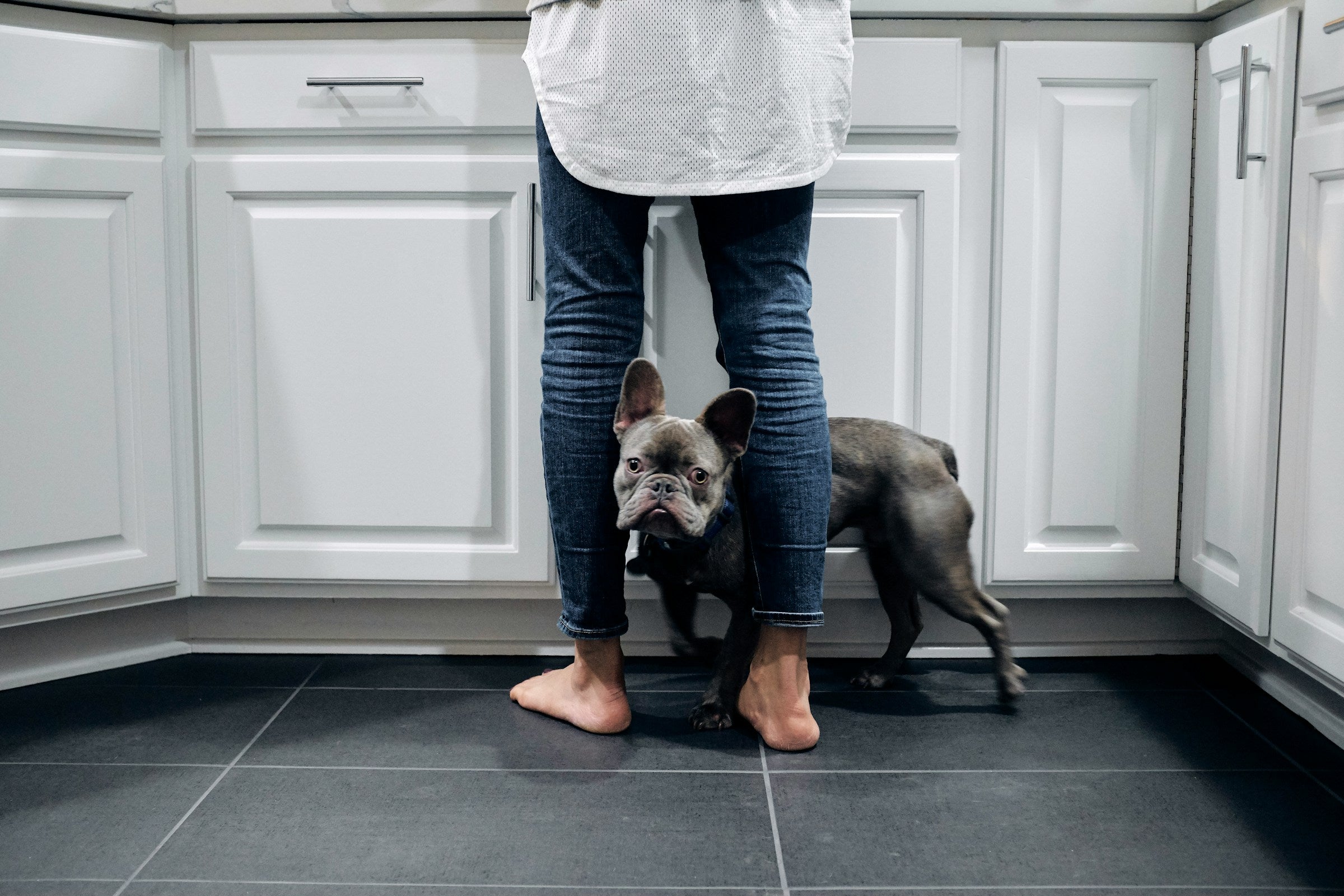Do you lament the day you bought your indoor security camera and realized that instead of watching your dog relaxing peacefully, you found that they anxiously pace and whine after you’ve left the house? Separation anxiety in dogs has become more prevalent as the return to office begins. It often results in a spectrum of behaviors that can significantly impact your dog’s quality of life. The good news? It’s manageable with the right approach.
Recognizing the Signs of Separation Anxiety
In order to learn the signs of separation anxiety, it’s necessary to know what events can result in a dog developing this condition. Times of transitions and a change in routines can leave your dog feeling unconfident in their new spaces. Moving homes, being adopted out of a shelter, and the death of a family member or other pet can all be separation anxiety triggers.
Traumatic events can also make your dog feel insecure. These events vary between dogs but could include living in a shelter, being left alone in a boarding kennel, and abuse or neglect.
Separation anxiety can hide; many pet parents believe their dog is just misbehaving or needs more training (We say training is a never-ending requirement, but we’ll ignore that for now). Your dog could have separation anxiety if they’re displaying any of the symptoms listed below:
- Trembling or salivating
- Digging and scratching at doors or windows
- Destructive chewing
- Howling, barking, or whining
- Using the bathroom inside (even with house-trained pups!)
Our Solutions To Having a Happy, Healthy Pup
Like most behaviors, the longer separation anxiety goes unchecked, the harder it is to correct. Don’t forget to use positive reinforcement over punishing your dog for separation anxiety-induced behaviors! Punishment could lead to worsening their anxiety and diminishing your dog’s confidence.
We’ve compiled a list of some of the most effective ways to help your pup feel more confident.
Exercise of the Mind and Body
Mental enrichment and physical exercise are going to be your best tools for treating separation anxiety. These tools are the best way to relieve the tension and pent-up energy that allows your dog’s separation anxiety to thrive. Physical exercise tires your dog like it does to you and helps them relax! Making mental enrichment e a part of your daily routine will be a lifesaver on days when physical exercise is not possible. A few ways to provide this stimulation are to offer puzzle toys, long-lasting treats such as frozen Kongs or lick mats, and family playtime.
Creating a routine is one of the best ways of helping a dog with separation anxiety–especially if they’re in a new place. This will give them coping mechanisms as they know when things will happen.
Minimizing Disturbances and Outside Stimuli
Some dogs are sensitive to noise and can become reactive when exposed to certain triggers for extended periods. Playing soothing music can help alleviate anxiety caused by outside noises. Dog TV is another easy option. Give your dog a safe space free from noise and excessive visual stimuli. Crates are great vehicles for this because they are used as a dog’s personal space.
Doggie Daycare or That Dog-Obsessed Kid Down the Street
If your dog craves 24/7 attention or is in a destructive phase, doggie daycares might be for you! Your dog will get to run and play with friends during the day (with an appropriate number of naps, too!) while simultaneously keeping your home safe from a bored pup.
Many services allow you to book a dog walker or sitter. Having someone check in on your dog during the day will give them a chance to have a potty break and catch some sunlight.
Embrace Irish Goodbyes and Smoke-Filled Entrances
Changing your goodbye routine up can alleviate a lot of your dog’s anxiety. When a lot of attention is drawn to your departure, it will make your dog see your comings and goings as major events. Keep things calm when you start getting ready to leave.
When you get home, ignore your dog for the first few seconds to ease the excitement of your arriving home. (This will be hard in the moment, but trust us, it pays off in the long run!)
Leave Out Your Smelly Gym Socks
Okay, maybe not your gym socks, but leaving a shirt or blanket that smells like you can provide a bit of relief for your dog! Being able to smell your scent will allow your dog to feel more secure and relieve their anxiety.
Progress, Not Perfection
Our dog’s separation anxiety should serve as a reminder of the deep connection and bond we share with them. The issue is not just about being left alone; it shows us how much we’re needed by our furry friends. Separation anxiety is not going to be a one-time treatment, it is something that you will always have to consider when large changes occur. Your dog will appreciate your commitment to making their lives whole and complete.


